Many parents struggle to feed their children a healthy diet. The good news is this: there are proven methods for changing your kids’ dietary habits that won’t cause a lot of friction.
This article covers 11 strategies that my wife and I have used to get our two kids to follow our dietary habits and eat (for the most part) the same food that we eat.
Our Family’s Dietary Family Background

Before we get started, let me give you some background so you better understand the difference between our kids’ diets a few years ago and today.
When our daughter was born in 2013, we followed a standard American diet consisting predominantly of low-quality protein, (processed) carbs, and sugary drinks. At the time, we thought (as so many people do) that we lived relatively healthy lives because we didn’t eat a ton of candy every day.
About two years later, we watched the documentary Super Size Me on Netflix, which highlighted the amount of added sugar the average American consumes every year. That was an eye-opener for us, and we immediately started throwing out the foods in our pantry that contained added sugars.
In 2016, right after our son was born, we transitioned to a paleo diet. A year after that, I adopted what I now call a Paleolithic ketogenic diet, while my wife continued following a low-carb paleo diet.
These days, the whole family is on what I call an animal-based diet, which you can think of as a mix of paleo, keto and carnivore.
What Is a Healthy Diet?


That leads us to an important point: what is the definition of “healthy food” and “healthy diet?”
Without knowing your dietary habits, I have a feeling that your definition and mine might be different.
I have a fairly simplistic view of what a species-appropriate diet for humans should look like — one that uses both evolution and the latest scientific research as my guiding principles.
Both have confirmed that our ancestors and early humans followed an animal-based diet.
In other words, for millions of years we were apex predators that ate predominantly meat, organs and fat from animals. And that’s what our bodies are programmed to thrive on.
While certain plants have always had a place in the human diet, they were mostly survival foods that we consumed if we didn’t have access to more appropriate sources of nutrients.
The good news is that by adopting an animal-based diet, you can stop forcing your picky eater to consume toxic vegetables, such as broccoli, kale and spinach. After all, these are the very foods you want them to stay away from.
If you’re not yet sold on the idea of removing most vegetables from your kids’ diets, I encourage you to check out my in-depth article about meat vs. plants in which I discuss the various food groups we consume and the ones we stay away from. Additionally, I encourage you to read my article about the benefits of consuming organ meats, which are the primary source of micronutrients for us.
11 Ways to Get Kids to Eat Healthy
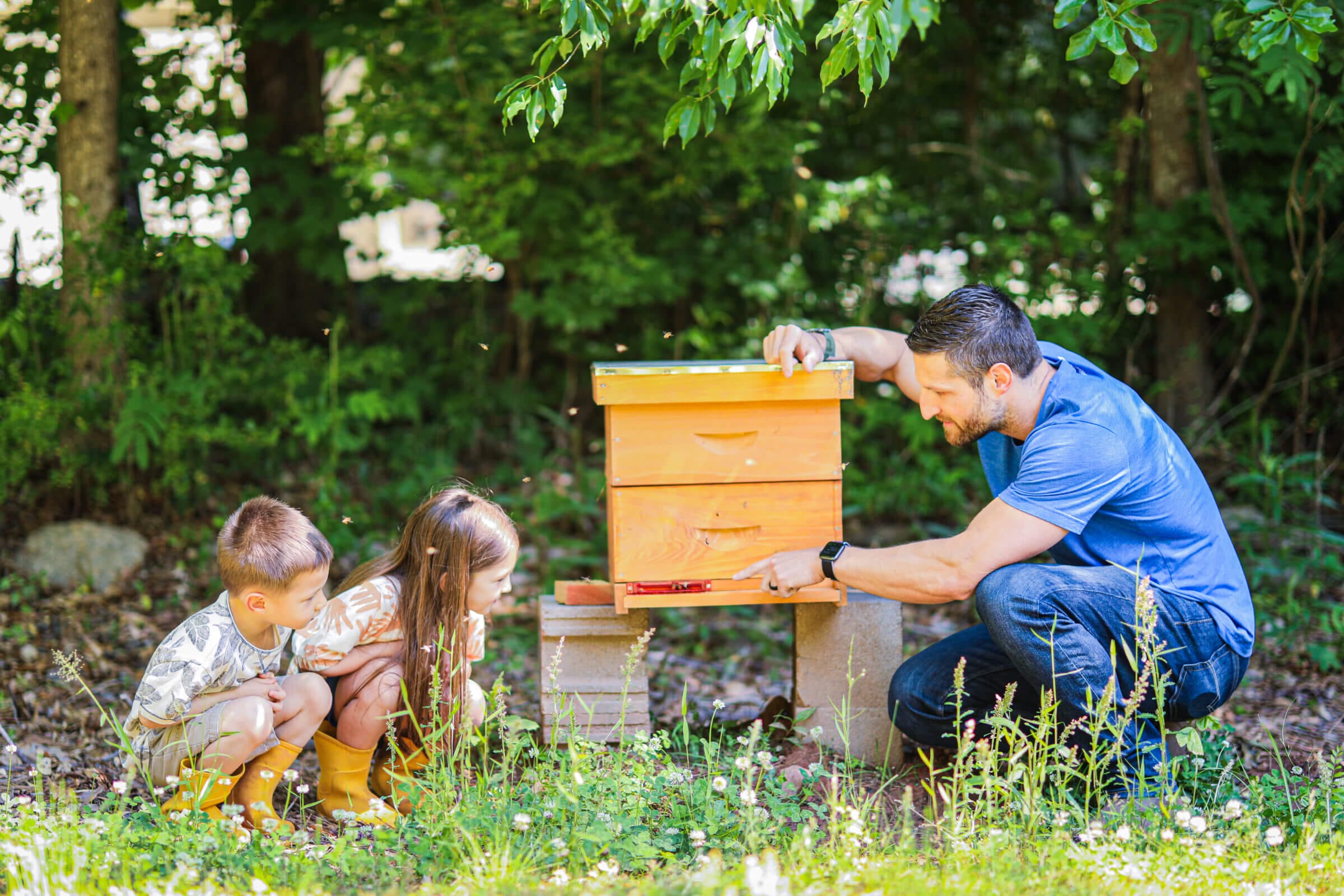
While the following tips have worked for us and our children, I encourage you to use them as a framework that you can modify based on your specific situation. If you come across a technique or tactic that has worked for you but isn’t listed here, please leave a comment and share it with other readers.
1. Start Early
The easiest way to get kids to eat healthy is to feed them healthy food from the very beginning. If healthy food is all they know, they won’t ask for candy, fruit juice and other carb-laden junk.
We missed that train with our daughter Isabella, who grew up on bread, pasta and other processed carbs. And it took a while to get her over those habits.
Fortunately, we did a better job with our preemie Lucas, who remained on a very low-carb, high-fat diet once he transitioned from breast milk to solid foods.
I intentionally used the word “remained” because breast-fed infants use fat as their primary source of fuel to fulfill the demands of their growing brains. In other words, breast-fed infants are practically on a ketogenic diet.
Our kids have never had candy (that we know of). As a result, we’ve never had an argument about it. Even when they come home from trick-or-treating on Halloween, they throw their candy into the trash bin without hesitation — we don’t even have to say anything.
Another example is when they get offered a lollipop at the barber or — and you won’t believe this — at some doctor’s offices. They just automatically say “no thank you” without even looking at us.
The point here is that it’s much easier to keep them on track rather than transitioning them from a crappy diet to a healthy one.
What many parents don’t realize is that overcoming the craving for sweets isn’t all about mental strength. Cravings are strongly influenced by the bacteria in your gut, which release chemicals to make you eat the foods the bacteria need to thrive. It’s a chemical survival mechanism that you can only influence by changing the composition of your gut microbiome.
That’s one of the reasons why removing processed carbs from your child’s diet is difficult.
The good news is that it can be done, and you can change your kids’ microbiome over the course of a few weeks. Better yet, feed your children an appropriate diet from the beginning. That helps establish the right type of gut bacteria — the ones that crave high-quality sources of protein and fat.
2. Be a Role Model
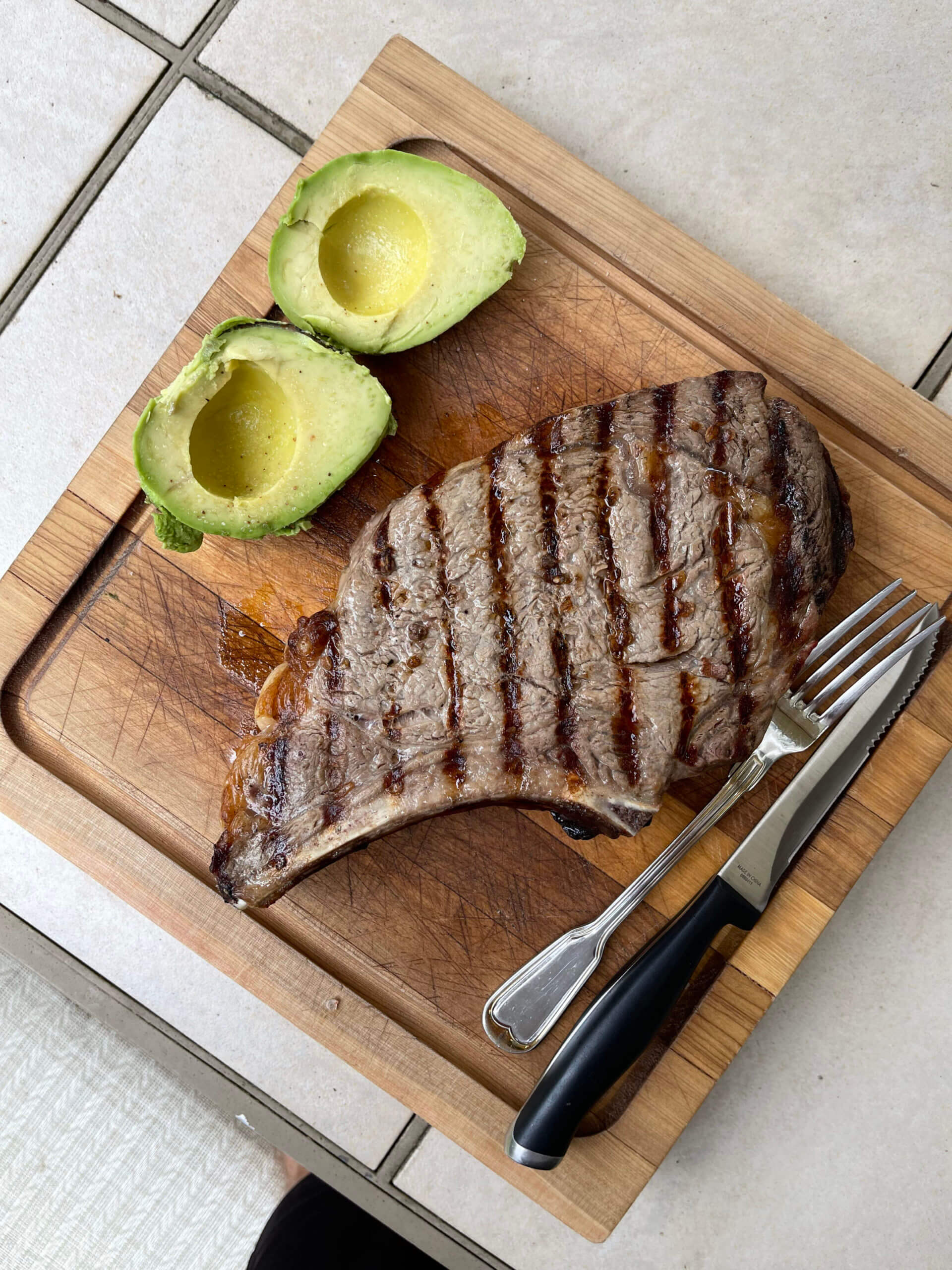
Kids often learn from what they see, not from what you tell them. So be a role model and don’t tell your kids to stop eating the very junk food that you continue eating.
In fact, you won’t be successful in changing your kids’ eating habits if you don’t change yours first. So adopt a healthy lifestyle, and show them how it’s done and how good it feels.
Only then will you truly understand the struggles, cravings, sugar withdrawal symptoms and social awkwardness that come with this transition.
I also encourage you to act as a team with your spouse or significant other, if you have one. If you’re not on the same page about how to feed your kids, they’ll get mixed signals and won’t know what to believe.
If you and your partner are separated and have a different understanding about what an appropriate diet for children should look like, I encourage you to talk it out as much as possible. I would argue that most parents want what’s best for their children. But sometimes, territorial issues and misguided methods of using unhealthy foods to show affection can get in the way of that. If need be, seek help from a knowledgeable counselor to help navigate the issue and to find a compromise you can live with.
The same is true for grandparents and other caregivers. Help them understand how you do things and why. I know this can be a very touchy subject and it would probably warrant a blog post on its own, but the bottom line is that you have to be firm.
Fortunately, both my wife’s parents and mine have always followed our guidelines, even when they don’t agree with everything. But I know from friends that’s probably the exception and not the rule.
3. Explain the Relationship Between Food and Health

Depending on how old your kids are, sit down with them and explain in simple and age-appropriate language why you’re changing their dietary habits.
We regularly talk with our kids about obesity and chronic disease and how those ailments can prevent people from living a good life and doing the things they enjoy. Our son doesn’t quite grasp most of that yet, but he follows whatever his older sister does — and she understands the basic concept and reasoning behind what we’re doing.
Additionally, I recommend involving your kids in the sourcing and preparation of their food. That way, they feel in control over what they put into their bodies. So take them to the farmer’s market on the weekend and teach them how to shop for food; having that expertise and knowledge will empower them to make the right choices for the rest of their lives.
4. Don’t Buy Stuff You Don’t Want Them to Eat
This might be the most powerful piece of advice I can give you. If you don’t want your kids to eat candy or certain snacks, then don’t have them at home.
We have a rule in our house: whatever food you can find in the house is fair game (with the exception of alcohol, coffee and similar items). The trick is that we don’t have any fresh food or snacks at home that we wouldn’t want our kids to eat.
By having put this framework in place, there is no opportunity to get into an argument over what food the kids want. If it’s there, eat it. If not, don’t bother asking.
That said, we do have some additional rules that limit the timing and amount of certain foods the kids can have. For example, we discourage them from eating fruits (or other carbs) until they’ve had their fat and protein. These extra rules still lead to the occasional whining or argument, but it’s much less of a problem than fighting about whether or not they can have a candy bar or soda.
5. Replace Carbs and Sugar with Healthy Fats

Human taste buds respond positively to sugar and fat. That’s the reason why your favorite low-fat yogurt tastes so good; because it’s loaded with sugar.
Despite what you’ve been told, saturated fats and cholesterol don’t cause heart disease and they don’t clog up your arteries. But guess what does? Sugar, processed carbs and vegetable oils (we’ll talk about the latter in the next tip).
So start removing foods that are high in processed carbs from your kids’ diets and start feeding them real food (made from scratch) that’s loaded with healthy fats from pasture-raised cows (tallow), grass-fed butter, coconut oil, avocado oil, olive oil or bacon fat from pastured pigs (lard).
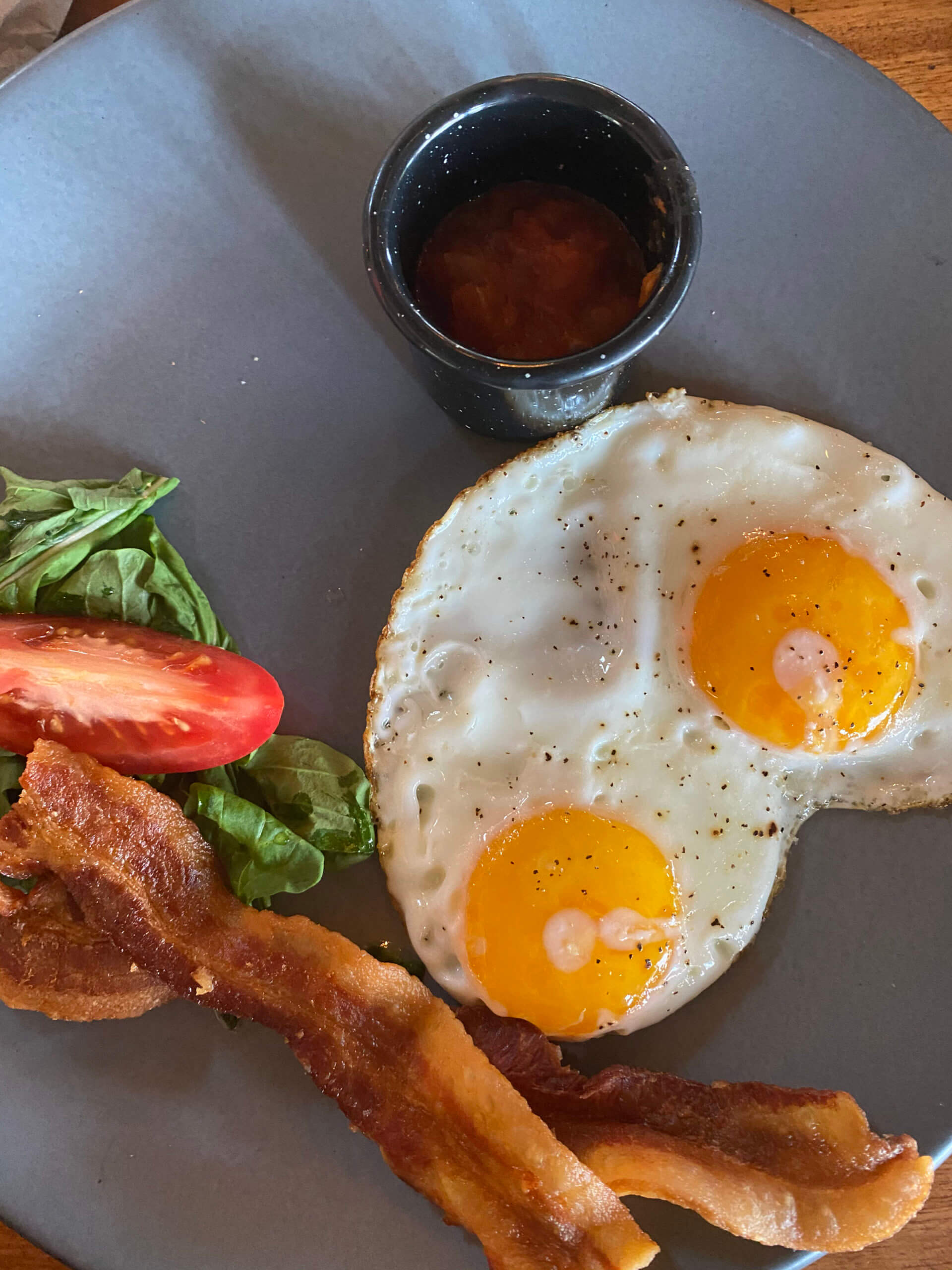
For example, our kids love omelets with bacon. So we chop the bacon, fry it and then prepare the omelet using all of the bacon fat. It tastes great and it has plenty of calories to keep them satiated for hours (thanks to the fat).
A meal like that has zero carbs. But even with a handful of berries on the side, it’s a very low-carb meal — especially compared to a bowl of cereal and a glass of orange juice.
Simple, delicious and healthy animal-based meals have helped our kids’ metabolisms become flexible and start using fat for fuel in the absence of carbs. That’s crucial, because metabolic flexibility leads to an optimally-functioning body. It also all but eliminates carb cravings and the need for constant snacking.
6. Stop Offering Snacks Between Meals

The standard dietary advice is to eat three meals a day (breakfast, lunch and dinner) and to have some snacks in between to prevent your blood sugar from crashing. But that’s just plain terrible advice!
If you’re metabolically healthy and flexible, then your body can easily switch back and forth between using glucose and fat (ketone bodies) for fuel. In other words, if you don’t eat, the body will burn its own fat for fuel without causing your blood glucose levels to plummet.
That’s why it’s so important to significantly decrease your kids’ carb intake — at least until their bodies have become metabolically flexible.
There will be some whining during this transition. But rest assured that your kids are not going to starve and their growth won’t be stunted because you withheld their 10 a.m. snack.
Note that reducing the frequency of your kids’ meals doesn’t mean they’ll consume fewer calories or nutrients.
To make this transition a bit easier, you could consider replacing unhealthy snacks with keto-friendly versions, such as the snack bars from Perfect Keto. Just keep in mind that while these snacks are made from much healthier ingredients than the ones you’ll find in the grocery store, they shouldn’t replace real, unprocessed foods. So use them wisely and strategically.
7. Skipping Meals Is OK

There is absolutely no harm in skipping a meal every so often. While I don’t encourage intermittent fasting or caloric restriction for children, skipping the occasional meal won’t be a problem.
Sometimes, our kids prefer to play instead of eating and we’re fine with that. Chances are, they got more calories than they needed at the previous meal. Or perhaps they really just prefer playtime over satisfying their caloric needs. Either way, we let them make that call instead of forcing them to stick to a rigid mealtime schedule — something our ancestors never had.
Instead, we encourage our kids to eat when they feel truly hungry, regardless of whether that aligns with a set mealtime. So if they’re super hungry at 4 p.m., they can have dinner then instead of waiting until we get hungry.
I know that there is an argument to be made about having meals together as a family and we try to do that as much as possible. But we think it’s more important to let our bodies guide us when it’s time to eat and when it’s not.
But that doesn’t mean our kids can graze on food all day. Quite the opposite is the case, as I alluded to above. While we aim to maintain flexibility around the timing of meals, we also try to reduce the number of meals we have on a given day to give our kids’ digestive systems enough time to rest. That promotes insulin sensitivity (as opposed to insulin resistance) and metabolic flexibility.
8. Prepare Meals From Scratch

Navigating the jungle of food labels is difficult. That’s because brands try their best to make you believe that their food is good for you, even if it isn’t. Plus, nutritional labels can be confusing, especially if you don’t know what half of the ingredients mean or how healthy they are.
That’s why I recommend staying away from packaged and processed foods as much as possible and, instead, cooking as many meals as you can from scratch using fresh ingredients.
I know that cooking every meal from scratch might be daunting. But the good news is that cooking an animal-based diet is much simpler than you might think.
For example, our kids’ breakfasts consist largely of pasture raised eggs made either scrambled or as an omelet. On some days, they enjoy yogurt made with coconut milk (either homemade or from the store), and on the weekend, they get keto waffles we buy at Whole Foods.
The latter is technically not an animal-based product, but it’s paleo and keto, so we view it as healthy enough for a once-a-week meal.
9. Don’t Use Unhealthy Food as a Reward
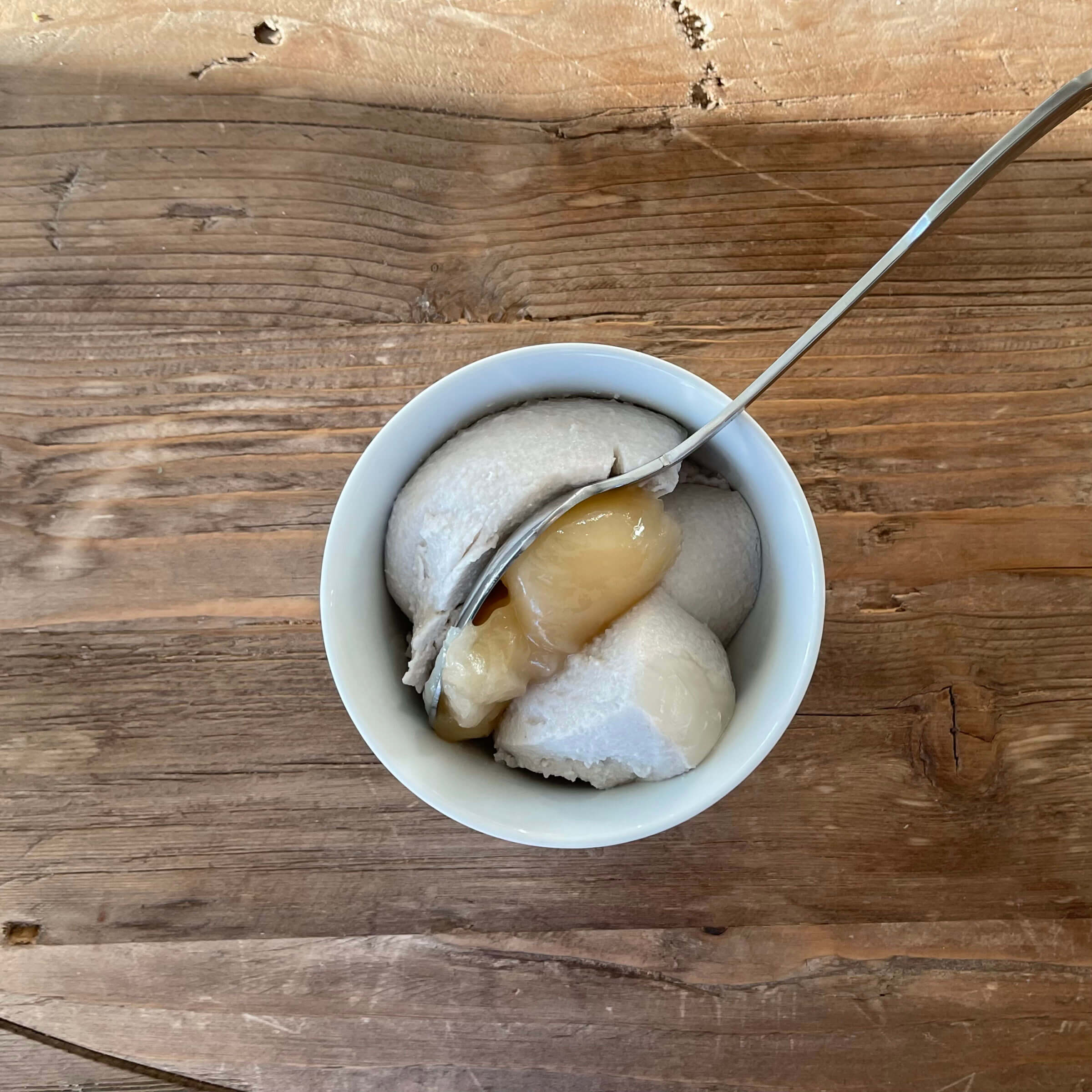
One mistake that many parents make when transitioning their kids to a healthier diet is to use unhealthy foods, such as snacks, as a reward for good behavior.
Doing this creates a positive association that’s counter-productive and confusing for the kid. More importantly, it gives the appearance that unhealthy food (the reward) is better than healthy everyday food.
Also, keep in mind that healthy food can be incredibly delicious. I’m not talking about trying to convince your kid of how “great” broccoli tastes; instead, I’m referring to homemade muffins made with eggs and bacon, or meatballs made from grass-fed beef that are pan-fried in plenty of tallow or bacon fat. These are the foods our kids crave and the ones we want them to eat.
However, if you want to reward good behavior with certain food, I suggest using a fruit they usually don’t get, or at least something that can be considered “healthy enough.”
For us, a special treat used to be a banana or a keto or paleo muffin from a local bakery. However, we didn’t use these as rewards for good behavior. In fact, I’m not convinced that using food as a reward is a good idea at all.
We just allowed ourselves (and our kids) to have those treats from time to time.
10. Exceptions Are Fine if They Don’t Become the Rule

Speaking of treats and exceptions: I think both are fine as long as they don’t become the rule. For example, if you’re having regular pizza every Friday, I wouldn’t call that an exception anymore.
The problem is that kids can have a hard time differentiating between a one-time event and a routine. At least, that’s the case with our kids.
A while ago, my son came with me on a trip to Whole Foods. On the way back, we stopped at the above-mentioned bakery to get some muffins. The bakery also sells hand-crafted gelato (made with relatively clean ingredients) and I must have had an exceptionally good day because I asked my son if he wanted to try a scoop.
He said “yes,” of course, and he loved his gelato. Guess what? The next time he was in the car with me he asked if we could stop by the bakery to get some gelato.
I’m telling you this because it’s been our experience that sometimes it’s not worth making an exception if that leads to an argument about why they were allowed to have something in the past that they can’t have now.
11. Swap Out Their Favorite Foods for Healthier Versions
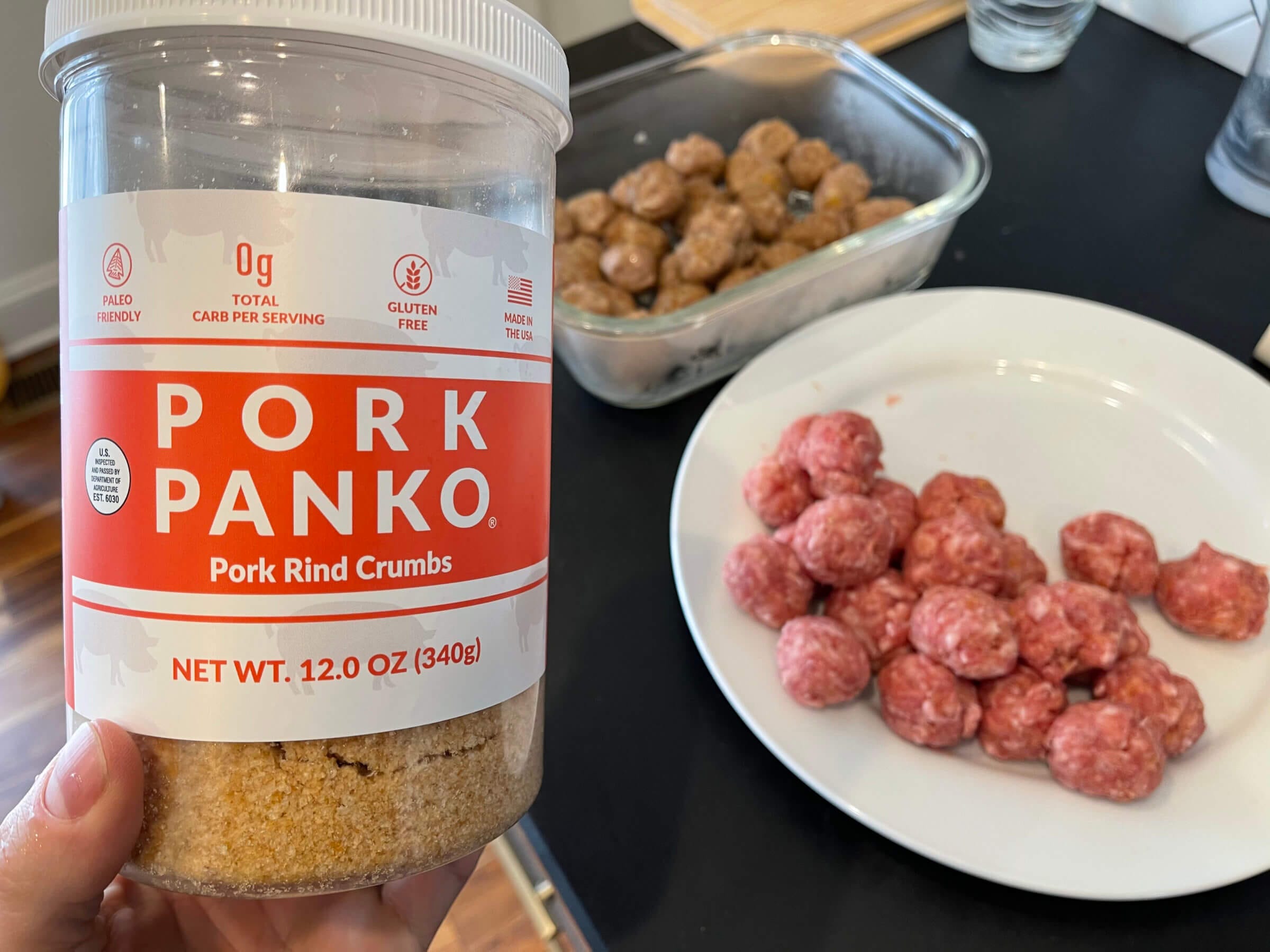


We didn’t transition from a standard American diet to an animal-based diet overnight; it took us several years.
But that doesn’t mean your transition has to take that long. In fact, if I had known what I know now, I would have made several shortcuts to compress the transition time to weeks instead of years.
For example, if your kids like pancakes or waffles, swap them out for keto-friendly options.
Another example is popsicles. Instead of offering them the sugar-laden ones from the store, just throw a couple of berries into a blender, add some water, pour the mix into stainless steel popsicle molds and stick them in the freezer.
If you’re struggling with finding good replacements for certain foods or dishes, shoot me an email and I’ll try to help!
What Our Kids Eat

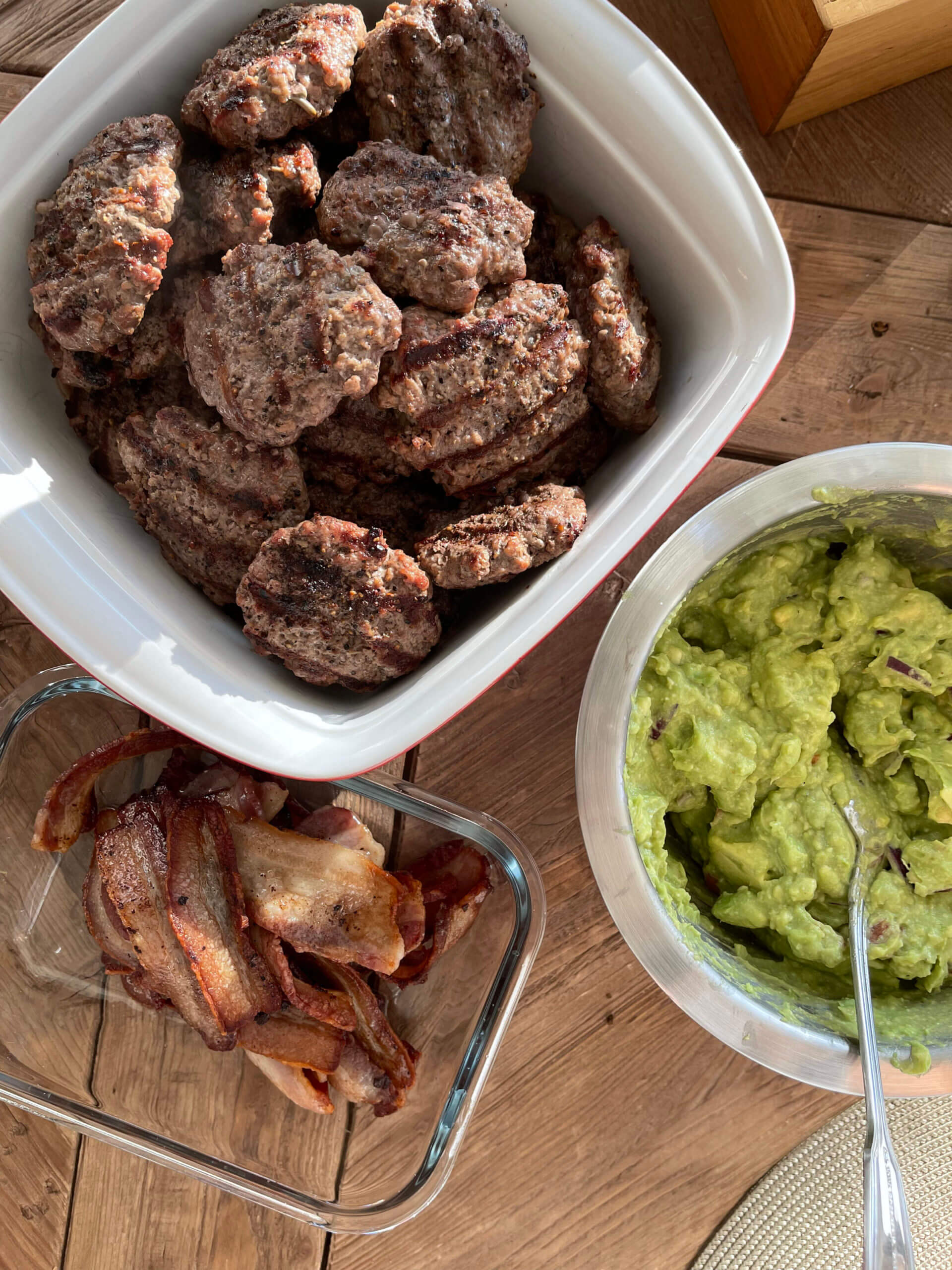
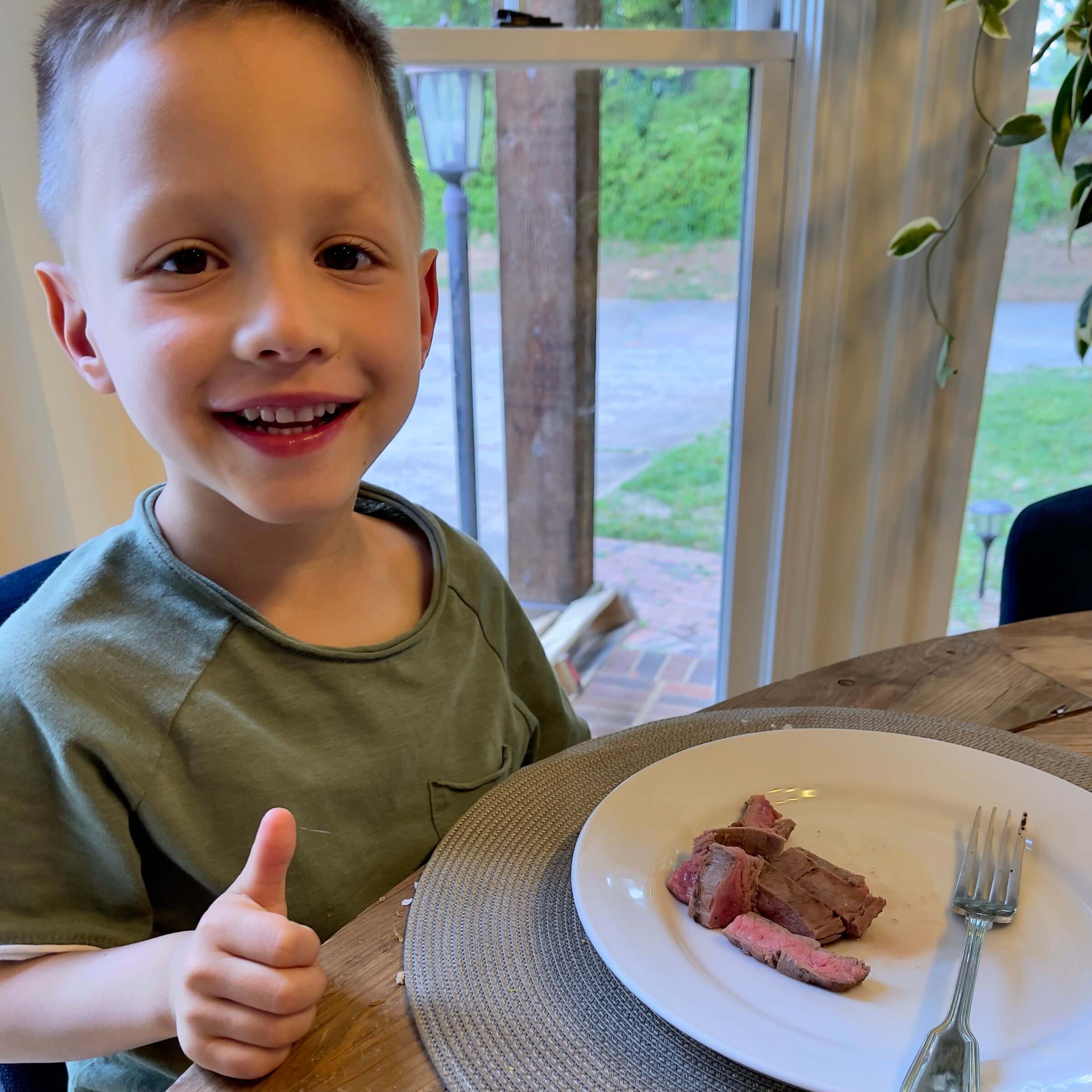


While I can’t offer you a complete meal plan as part of this blog post, I’d like to share some of the foods that our kids eat on a weekly basis. Hopefully, that’ll serve as an inspiration for what you could offer your kids.
For breakfast, our kids usually have pastured eggs (we have a flock of 16 chickens in our backyard), coconut milk yogurt, seasonal fruits, keto waffles or keto pancakes.
For lunch they usually eat whatever my wife and I eat. That includes mostly pasture-raised meats (like steak, meatballs, sausages and homemade patties), wild-caught seafood (like shrimp, fish, and octopus) or more eggs.
On the side, they can have fruit or some of the least-toxic veggies (peeled carrots, peeled and de-seeded cucumbers/squash, avocado) and occasionally a salad made from shredded cabbage with a lot of avocado-oil mayo.
For dinner, they often get whatever we have left from lunch or the previous days’ meals.
Note that dinner doesn’t have the same priority in our house as it does for many other families. We try to avoid consuming too much food before bedtime to improve the quality of our sleep, so dinner tends to be relatively small. I suppose the fact that my wife is a homemaker and I work from home means that we can easily have breakfast or lunch together, so dinner isn’t the only opportunity we have to enjoy a meal as a family.
As far as beverages are concerned, our kids drink predominantly filtered and remineralized water and homemade water kefir (when we have it).
Snacks We Allow Our Kids to Eat

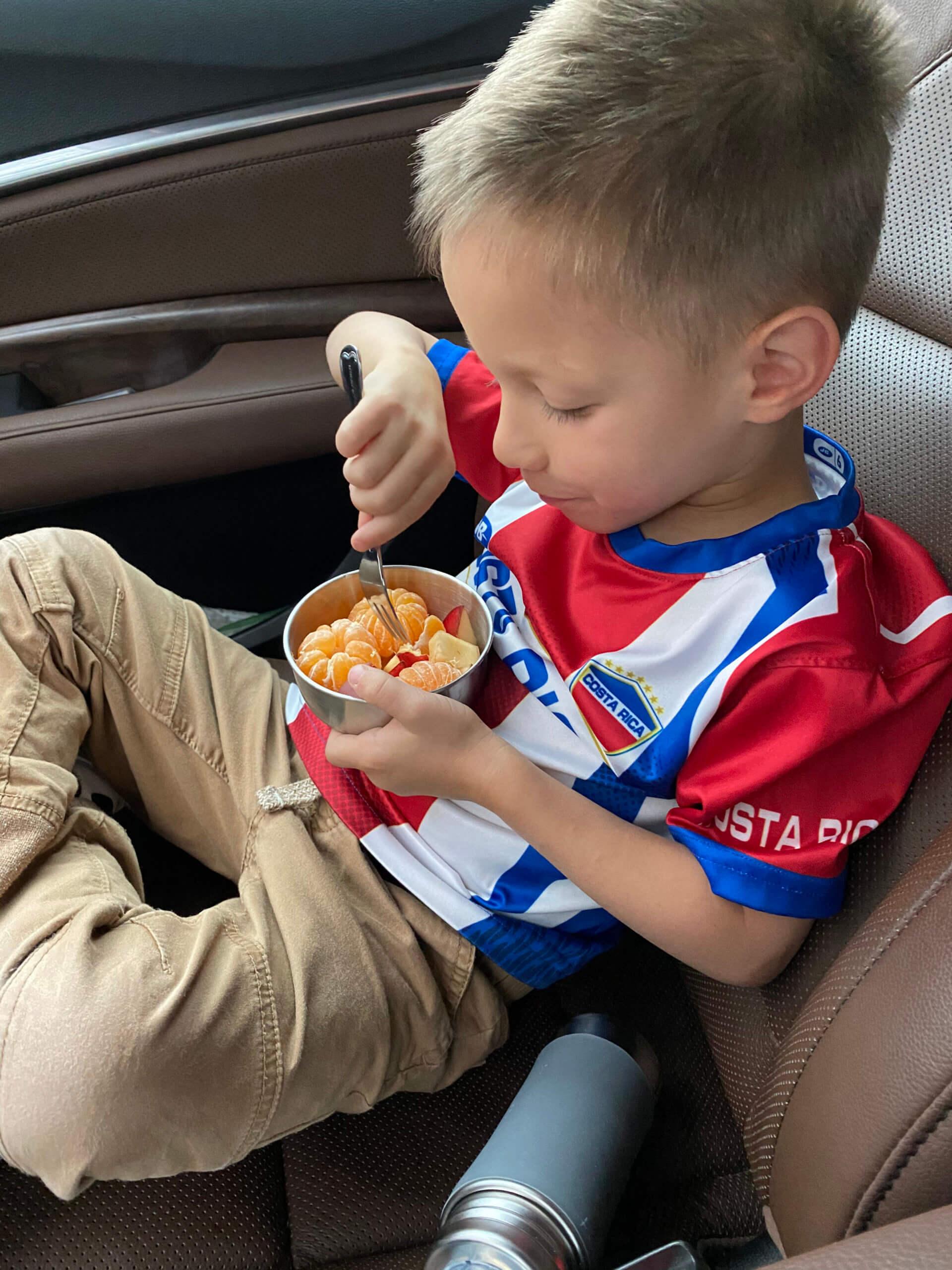
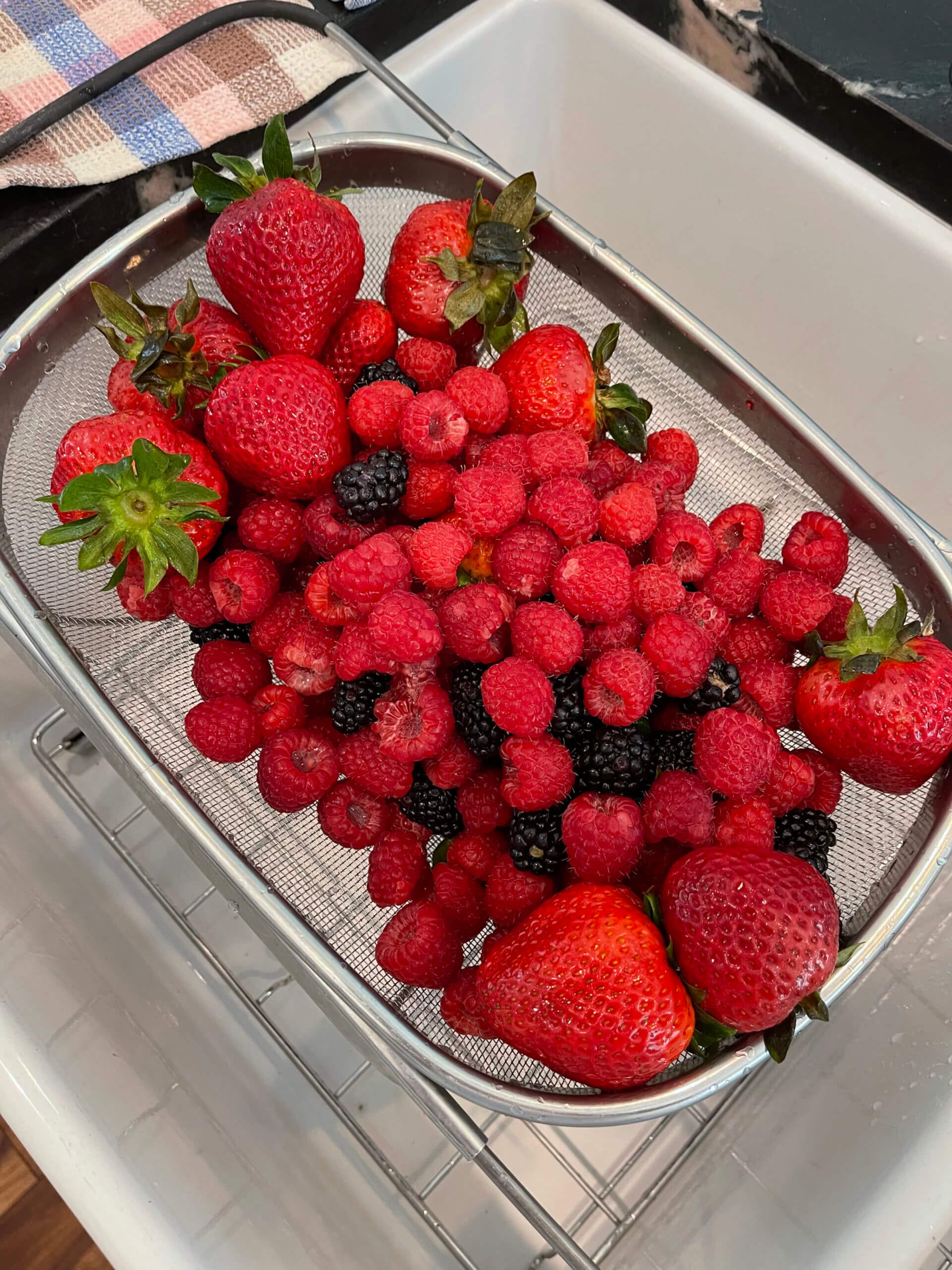
I don’t like making snacking a routine so we don’t offer our kids a snack every day between meals. But if our kids are truly hungry at any given time during the day, they’re allowed to grab whatever snack they can find in the fridge or the pantry.
The available snacks usually include:
- A handful of sweet potato or sweet plantain chips.
- A spoon of raw honey.
- Grass-fed beef jerky.
- Extra-dark chocolate chips (sweetened with stevia).
- Extra-virgin olive oil (our five-year-old loves slurping olive oil).
- Keto Cups (a low-carb snack made with coconut fat and dark chocolate).
- Pasture-raised cheese (preferably from A2 cows).
- Seasonal fruits.
Occasionally, we have other snacks at home but they’re usually either paleo or keto-friendly. A good example of such an occasional snack is Perfect Keto bars.
Foods We Want Our Kids to Eat (But They Refuse)

Knowing that organ meats are the most nutrient-dense foods on the planet and the ideal source of vitamins and minerals for kids and adults alike, I want my kids to eat liver, heart, lungs, spleen and all the other organs I regularly have on my plate.
We occasionally sneak liver into meatballs without them knowing, but we don’t have those often enough to provide them with a consistent stream of micronutrients.
That’s why we started offering our kids freeze-dried beef liver capsules once a day. They watched us take them for months so they had no hesitation doing the same.
If you’d like to learn more about nature’s ultimate multivitamin, check out this post that explains why you should eat organ meat.
Foods We Discourage Our Kids From Eating
The list of foods that we don’t offer our kids is long, so here are just a few highlights:
- Anything that has added sugars.
- Anything with artificial sweeteners or colors.
- Anything that has vegetable or seed oils.
- Bread and pasta.
- Candy.
- Fruit juices.
- Grains and legumes.
- Most processed carbs.
- Most vegetables.
- Sweetened beverages.
Our rule of thumb is that if it cannot be hunted and gathered, we try to avoid it.
How We Handle School and Social Events



If families lived in isolation it would be much simpler to stick to whatever diet you deem appropriate for your kids. But that’s not the case, so you’ll have to come up with a strategy for how to handle social events and even school-provided meals.
When our kids were in pre-K, we talked to the teachers and the principal and asked if we could provide our kids’ lunch or if the school could accommodate our dietary restrictions.
While the school didn’t allow any outside food due to allergy concerns, they agreed to only offer our kids the foods we approved. Of course, the school didn’t offer pasture-raised meats and organic fruits, but we were at least able to avoid the most offensive foods (like cereal, pasta and bread).
Now that both kids are in elementary school, they can bring their own lunches and we no longer have that problem.
In the past, for birthday parties and other social events, we usually brought our own food so our kids wouldn’t have to eat whatever was served (usually pizza and sugar-laden cake). But we didn’t want to deprive them of the joy of eating cake with their friends, so we always brought a keto-friendly or paleo-friendly cupcake, or a slice of cake that my wife made at home. In fact, we kept a stash of muffins and slices of cake in our freezer for such occasions.
While this strategy worked fine for several years, we recently decided to give our older daughter (who is now seven) more decision-making power. That means she can now decide whether or not she wants to have a slice of pizza or a piece of cake at a party or not.
In fact, we’ve now reached a point where our kids make good dietary decisions nine out of 10 times, even without our presence or input. For those few occasions where they choose “wrong,” we don’t make a big deal out of it because sometimes my wife and I make wrong decisions too.
Why Eating Healthy Is Simple but Difficult
Eating healthy is fairly simple on paper, but our modern lives make this task incredibly difficult to execute.
Besides a lack of knowledge and the overwhelming amount of conflicting (and misleading) information, convenience is likely a driving factor behind parents feeding their kids fast food, sandwiches, french fries, fruit juice, ice cream, mashed potatoes and macaroni and cheese.
Just think about it: if you’re in a time-crunch, making a sandwich or heating up some microwave mac and cheese takes less than five minutes. Compare that to defrosting and grilling a grass-fed steak.
I get it!
But convenience shouldn’t be the reason for feeding your children a diet that will lead to unfavorable health outcomes in the long-run.
To overcome these issues, we had to establish a new routine that involved the sourcing and preparation of food. For example, we purchase meat in bulk and make sure to regularly move some of the meat from the freezer to the fridge. Making patties or meatballs from ground meat and cooking them in our air fryer or on the grill only takes a few minutes. Combined with avocados or seasonal fruits that we get from the store (or our garden), meal prepping is dead simple.
Additionally, we buy wild-caught sardines and tuna that we can rely on in a pinch (and if nothing else is available). While not all kids are like ours and enjoy bone-in sardines, canned tuna mixed with an avocado-oil-based mayo and salt is something many kids will enjoy.
Once you’ve established your new routine, you’ll realize that eating healthy is actually less complicated than a regular diet because you’ll only have to deal with a limited number of ingredients — most of which don’t require elaborate recipes to turn into a delicious meal.
Frequently Asked Questions
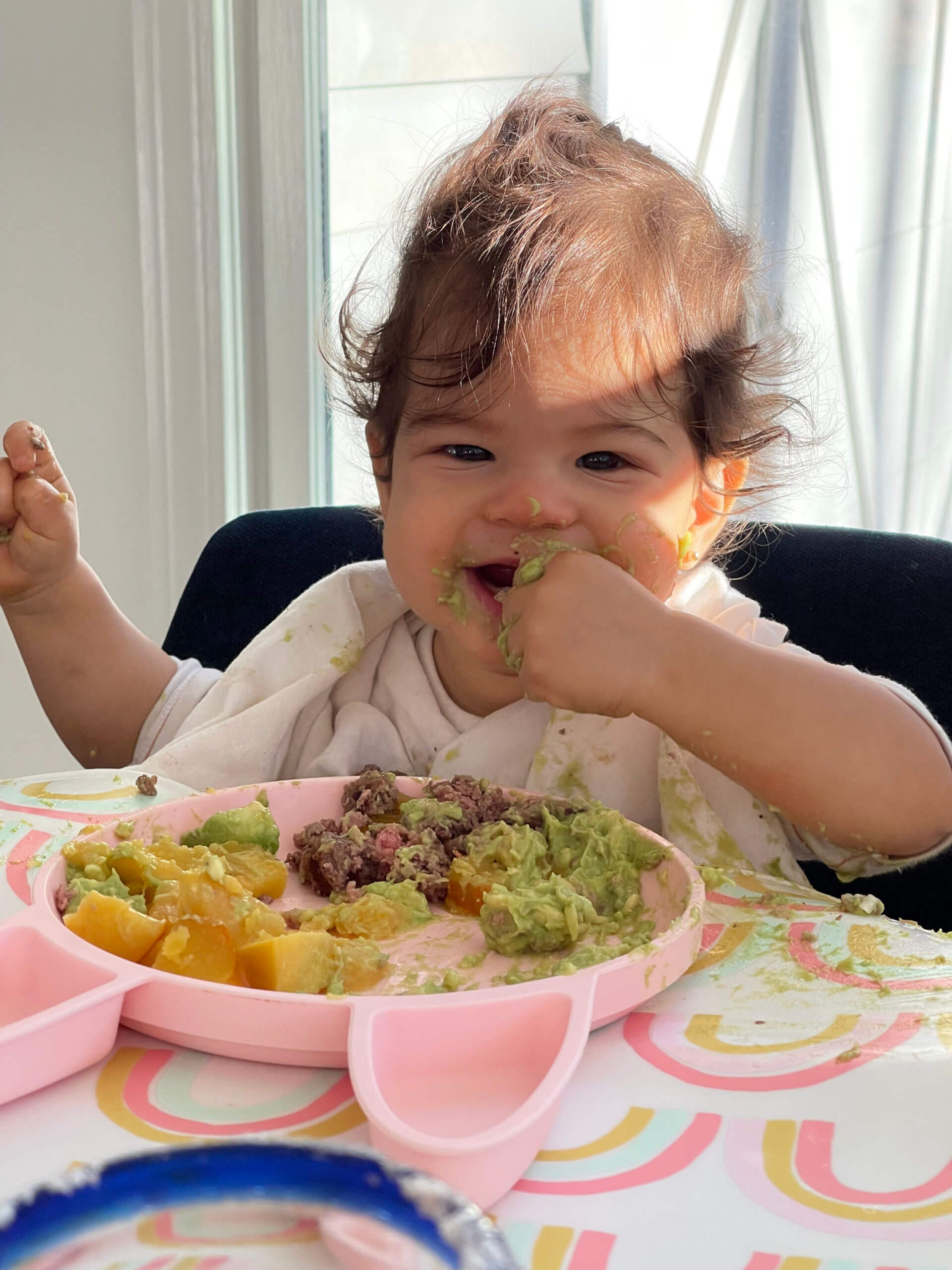
Until you’ve established healthy eating habits, I’d recommend reducing snacking to a minimum. However, once your child’s diet is on the right path, you can offer snacks such as the ones I mentioned above: fresh fruit, popsicles made from fresh fruit, raw honey, dehydrated meat snacks from pasture-raised animals, and sweet potato or plantain chips.
No, they don’t. There are no clinical trials (only weak, observational evidence) that suggest we need fiber in our diet.
That doesn’t mean your kids can’t have fiber from the least-toxic plants (e.g., avocados or acacia fiber), but I would definitely not offer them whole grains because whole grains are loaded with inflammatory toxins and antinutrients that can hamper the absorption of other nutrients and wreak havoc on the gut microbiome.
Unfortunately, peanuts and peanut butter aren’t healthy food choices. You can learn more about that in my article about the best nut butters.
In a nutshell (pun intended), peanuts aren’t nuts but legumes and they contain significant amounts of antinutrients. Additionally, all peanuts are covered in a toxic and carcinogenic mold called aflatoxin.
For these reasons, I strongly recommend not offering your children peanut butter on a regular basis — as delicious as it is.
Instead of traditional french fries, I recommend air-fried sweet potato fries because they have a lower glycemic load. That means the starches in sweet potatoes raise blood sugar slower than that of white potatoes.
However, I recommend avoiding packaged sweet potato fries because they almost always have extra ingredients you don’t want. So buy a couple of organic sweet potatoes and cut them yourself.
Of course, air frying isn’t a shortcut to a healthy diet. You can learn more about the pros and cons in this guide to the health implications of air frying foods.
Not really because it contains inflammatory plants, such as chickpeas, that I recommend you don’t give to your kids.
While dairy is arguably the most popular source of calcium, it’s not an ideal one because most dairy contains lactose and inflammatory casein protein.
Instead of regular cows’ milk, we offer our children bone-in fish (e.g., sardines), organ meats (in the form of capsules), and aged cheeses made from 100% grass-fed cows that produce A2 milk.
A2 is a non-inflammatory type of casein protein that’s produced by Jersey cows, goats, camels and sheep.
That depends on what your doctor means by “balanced.” If he or she meant that your child can have “everything in moderation,” then I strongly disagree with that advice.
There’s no need to include unhealthy, toxic or inflammatory foods that have never been part of human evolution as part of your child’s diet.
But if you want to strike a balance between pasture-raised meats, wild-caught seafood, pastured eggs, seasonal fruits and some of the least-toxic plants, then by all means, go for it!
As a side note, you don’t need to offer your child a variety of colorful vegetables (a.k.a. “the rainbow”). Most of these colorful vegetables are either highly toxic (such as leafy greens) or inflammatory (such as beets and peppers), and I’d recommend avoiding them altogether.
Instead, create your rainbow using red meat, deep-orange egg yolks and green avocados.
Unfortunately, you can’t exercise away a bad diet. There are plenty of overweight and obese children (and adults) out there that exercise every day and still don’t achieve a healthy weight. So it’s crucial to get your child’s diet in order first and to remove vegetable/seed oils, processed carbs and toxic plants first before worrying about exercise.
The challenge is finding a balance between steering your children in the right direction (nutritionally) and making food a major problem that might lead to eating disorders later in life. That’s why we try to avoid food battles in our home by giving our kids the power to influence what they eat — based on the food we have at home.
I should also mention that some studies have linked picky eating to underlying psychological problems that might be entirely unrelated to food. If you suspect that might be the case, I recommend seeking the help of a knowledgeable counselor.
We don’t limit our kids’ portion sizes because when they consume nutritious food from animal sources that are packed with healthy fats and bioavailable micronutrients, they’ll stop when they’re satisfied.
The feelings of hunger and satiety are controlled by hormones, including ghrelin and leptin. In metabolically healthy kids, these hormonal cycles operate effectively, negating the need for portion control.
We allow our kids to eat as much salt as they want. Despite what you may have heard, consuming more than the government-recommended amount of sodium per day doesn’t increase your risk of heart disease. It’s yet another myth that has long been busted by scientific evidence.
At the Kummer household we only use high-quality and unprocessed salts that contain natural trace minerals and our kids can use as much of it as they want.
It might take several attempts before your child accepts a new food you’re trying to introduce. There is more involved in liking a certain food than just taste. The way food looks, smells and feels (texture), as well as any positive or negative association with it, influences how likely your child is to try it. Some of these senses have to be trained to unfamiliar smells or textures, and that takes time.
That’s something I’ve experienced countless times myself; I didn’t like something initially, but after several attempts, I ended up tolerating or even loving it.
So don’t give up if your child refuses new food at first. If you still don’t have luck after the fifth attempt, try something else and circle back to the refused food in a few weeks.
How to Get Kids to Eat Healthy: Closing Thoughts
If all of the above information seems impossible to implement, just remember that there is a silver lining to all this: your kids will be among the few that will never hear you say “you have to eat your veggies!”
Instead, they can have as much red meat, bacon, eggs and guacamole as they want (as well as plenty of seasonal fruits and raw honey).
If I was a kid, I’d say that’s a pretty good deal!
Either way, don’t feel overwhelmed. Make a plan and take small steps by removing the unhealthiest foods and beverages first while replacing them with healthier foods.
Once your kids get over the initial cravings and sugar withdrawal symptoms, it’ll be easier to implement additional changes.

Michael is a healthy living enthusiast and CrossFit athlete whose goal is to help people achieve optimal health by bridging the gap between ancestral living and the demands of modern society.
Medical Disclaimer
The information shared on this blog is for educational purposes only, is not a substitute for the advice of medical doctors or registered dieticians (which we are not) and should not be used to prevent, diagnose, or treat any condition. Consult with a physician before starting a fitness regimen, adding supplements to your diet, or making other changes that may affect your medications, treatment plan or overall health. MichaelKummer.com and its owner MK Media Group, LLC are not liable for how you use and implement the information shared here, which is based on the opinions of the authors formed after engaging in personal use and research. We recommend products, services, or programs and are sometimes compensated for doing so as affiliates. Please read our Terms and Conditions for further information, including our privacy policy.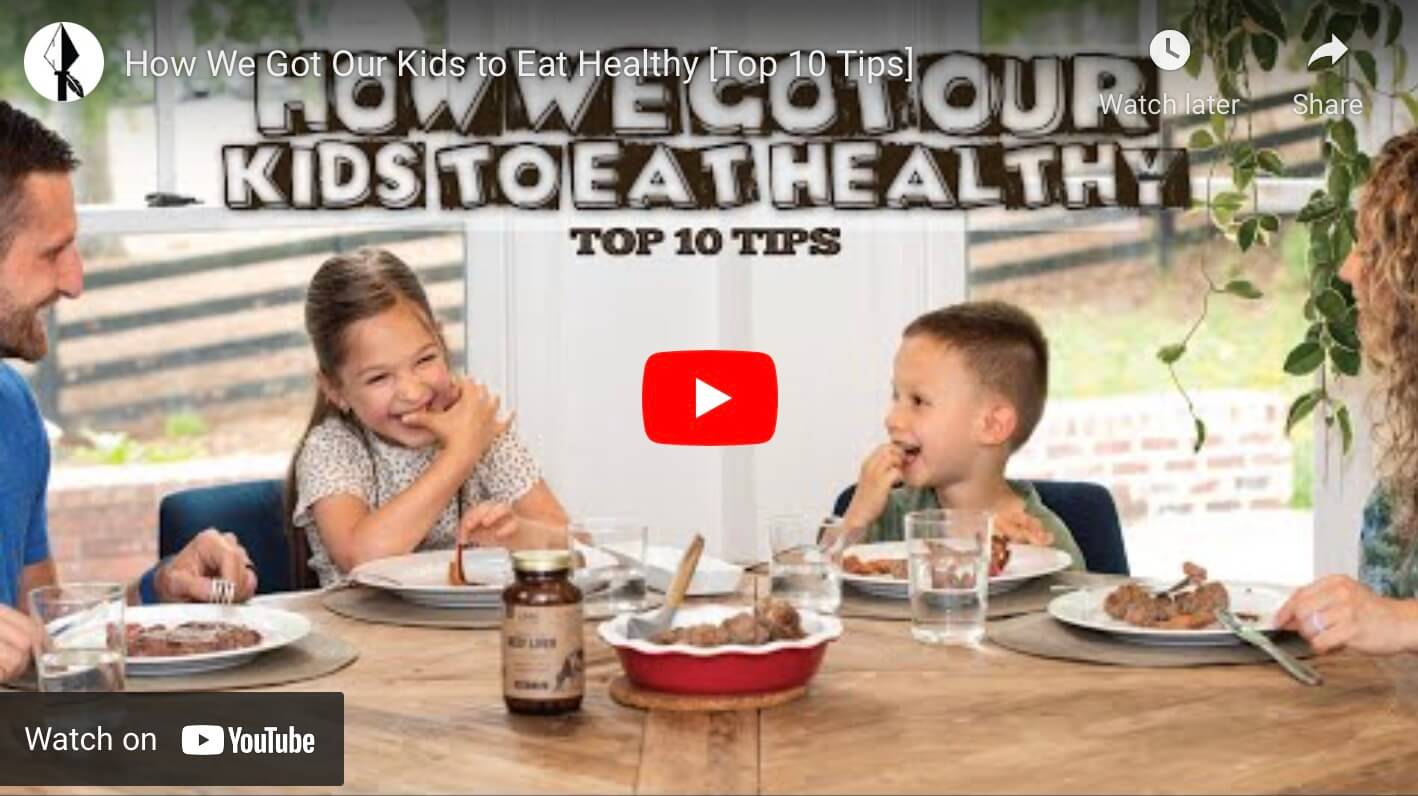
Michael, what an excellent post.
I’ll admit I don’t follow a carnivore diet (I would define my diet as Mediterranean Keto) but getting kids to eat healthily has been a huge and important (and difficult) project for me. I have grandkids in America and in Europe. Nobody is perfect but I see a huge difference between the 2 groups. So much nonsense here, the amount of sugar and carbs, in general, is frightening and a lot of children get instant gratification any time they say ‘I’m hungry’…. Your post gives meaningful advice that should not be that difficult to follow if you really want your children to be healthy and maybe bend society and the food industry the right way.